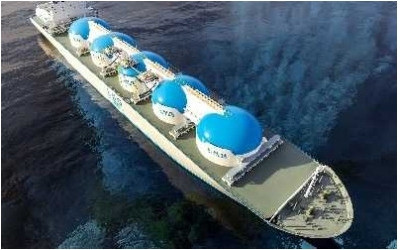March 21, 2025

The global LNG industry is expanding at a rapid pace, driven by increasing energy demand and the push for cleaner alternatives to coal and oil. While securing financial investment, managing supply chains, and ensuring regulatory compliance are all vital to the success of LNG projects, one factor often determines the difference between smooth execution and costly delays: recruitment. Having spent years in energy recruitment, I’ve seen firsthand how staffing the right workforce at the right time can make or break an LNG project. These projects are uniquely challenging—not just because of their technical complexity, but because they require a strategic and agile approach to talent acquisition. Here’s what I believe are the most important factors in managing recruitment for major LNG developments.
1. Understanding the Specialized Nature of LNG Talent
Unlike many other energy sectors, LNG requires a highly specialized workforce across multiple disciplines, including engineering, construction, operations, and maintenance. Professionals in this industry must possess deep expertise in cryogenic technology, liquefaction processes, and safety-critical operations. However, such specialists are in short supply, and competition for talent is fierce. A key mistake I often see is companies assuming they can fill roles with general energy-sector professionals. While some skills transfer, LNG demands a level of specialization that only a tailored recruitment strategy can address. Working with recruiters who have deep industry knowledge ensures that the right skill sets are matched with the specific demands of LNG projects.
2. Planning for Project Timelines and Phases
LNG projects are capital-intensive and operate on long, phased timelines. From initial feasibility studies to front-end engineering design (FEED), construction, commissioning, and eventual operation, each phase requires distinct types of talent. If recruitment isn’t synchronized with project milestones, bottlenecks emerge, causing delays and escalating costs. One of the most common recruitment challenges is failing to anticipate labor shortages in peak construction phases. Some disciplines are in particularly high demand during particular phases, yet many projects face hiring bottlenecks because they didn’t engage talent early enough. A forward-looking recruitment plan—one that builds talent pipelines ahead of demand—can prevent costly delays.
3. Global Mobility and Local Workforce Integration
Global LNG projects are often located in remote or offshore environments, requiring a mix of international expertise and local workforce participation. Striking the right balance between expatriate talent and local hiring is essential—not just for compliance with local labor regulations but also for fostering community engagement and long-term project sustainability. Countries investing heavily in LNG, such as the U.S., Qatar, Australia, and Mozambique, have different labor laws and expectations for local content requirements. Understanding these regulations early in the recruitment process prevents legal hurdles down the road. More importantly, integrating local talent into the workforce can improve project stability and create lasting economic benefits for host communities.
4. Addressing the Industry’s Cyclical Nature
The LNG sector is highly cyclical, with demand for workers fluctuating based on market conditions and project timelines. While some projects demand thousands of workers during peak construction, workforce needs evolve over time, often transitioning to more specialized teams as different phases of the project progress. Managing this volatility requires a flexible recruitment strategy that can scale up or down as needed. Many LNG developers struggle with this, leading to workforce shortages in boom times and layoffs in downturns. By leveraging a mix of contract, contingent, and full-time staffing solutions, companies can optimize workforce costs while ensuring talent availability when needed most.
5. Ensuring Safety and Compliance in Hiring
LNG projects operate in high-risk environments where safety is paramount. Hiring workers who understand safety protocols, regulatory compliance, and industry best practices isn’t just about ticking boxes—it’s about protecting lives. Recruitment in this space must prioritize candidates with proven safety records and experience in hazardous environments. Furthermore, companies need robust onboarding and training programs to ensure all workers meet safety expectations before stepping onto the project site. A strong safety culture starts with hiring the right people and reinforcing compliance at every level.
The Bottom Line: Recruitment as a Strategic Priority Too often, recruitment is treated as an afterthought in LNG projects—something to address once technical plans are finalized. But in reality, workforce planning should be embedded in the earliest stages of project development. Without the right people in place, even the best-engineered projects can face significant delays, safety risks, and cost overruns. Success in LNG isn’t just about technology, infrastructure, or financing—it’s about talent. Companies that recognize recruitment as a strategic priority will be the ones best positioned to deliver projects on time, on budget, and with long-term sustainability in mind. By focusing on specialized expertise, project-driven workforce planning, local integration, flexible staffing, safety, and technology, we can build a stronger LNG industry—one where people remain the foundation of success.






You can also use your social account to sign in. First you need to:
To connect your social account you must Acknowledge the Terms & Conditions and Privacy Policy